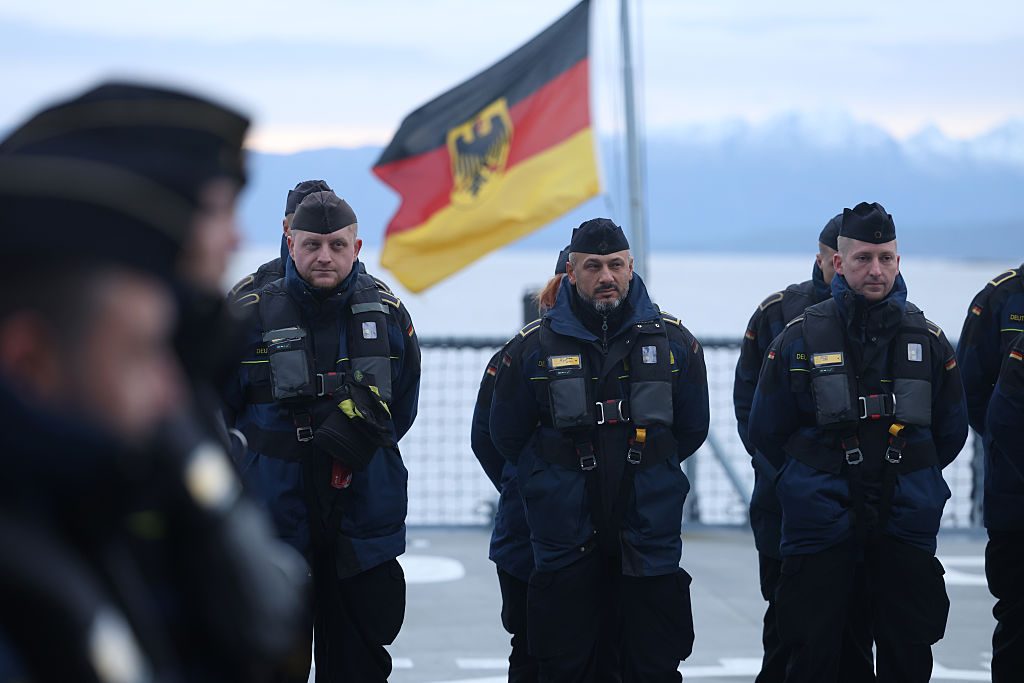“In view of the threats to our freedom […] the rule for our defence now has to be ‘whatever it takes’,” pledged Friedrich Merz back in the spring, shortly before he became German Chancellor. Now his government is putting money behind those words. A lot of money. A €377-billion military procurement list has emerged. But no matter how much Merz spends, it won’t buy him the social or political consensus needed to make Germany fighting fit.
There’s no doubting the ambitious nature of Merz’s new shopping list. According to Politico, which has seen the 39-page internal government document, it itemises planned purchases in every field from land, air and sea warfare to space and cyber. Some entries are earmarked for the 2026 budget. Others are long-term investments, indicating a level of strategic defence planning that is entirely new after decades of complacency and underinvestment.
Money is almost no object. The new government managed to exempt all defence spending above 1% of GDP from the country’s once-rigid fiscal rules. While larger items on the wish list will still have to be signed off by a parliamentary committee, the scale of the overall plan suggests that the government expects consensus on the general direction of rearmament.
Among the items to be purchased are 687 Puma infantry fighting vehicles and 561 Skyranger 30 air defence turret systems, which can be used against drones. In turn, new tactical drones are also on the list alongside munitions for the existing fleet. It’s a long paper that speaks of ambition and political will, indicating Germany may soon have the gear it needs to return to defence readiness.
There is just one problem: as it stands, Germany won’t have enough people to steer, fire, maintain and use the equipment as necessary. Just before Alfons Mais retired as Inspector of the Army last month, he named dramatic figures in a confidential letter that was leaked to the press. The army alone would need to be increased from its current 62,000 soldiers to 150,000 to meet NATO targets. But while surveys suggest that the majority of Germans support higher military spending, many draw the line at personally joining the Bundeswehr, the country’s military.
Troop numbers have stagnated for years, with the overall figure of military personnel stubbornly hovering around 180,000, despite various recruitment drives. A recent survey showed how deep the problem runs: a large majority of nearly 60% of participants said they “definitely” or “probably” wouldn’t defend Germany with arms even if it were attacked militarily. Merz providing more of said arms won’t change that attitude.
Returning to some form of compulsory military service is one option the government is exploring to solve the conundrum. According to recent polling, that would have the backing of the majority of the public, but crucially, those affected — the younger generation — are much more critical, with nearly two-thirds of 18-29-year-olds saying they’d be against conscription.
Within the ruling coalition, a row over this issue has also been raging for months, with the centre-left SPD arguing for a scheme based on voluntary participation, while Merz’s conservative CDU/CSU has pushed for it to become compulsory soon if the numbers for the Bundeswehr don’t rise quickly.
Merz may now have the funds to compile a military wish list to match his ambition, but the German public and many of his colleagues in government are a long way from pledging to do “whatever it takes” to defend their country and Europe. For young people to agree to risk life and limb for something greater than themselves, that something has to be powerful and cohesive. Money and equipment alone don’t make an effective military. Soldiers with the right mindset do. And those are much harder to come by than tanks and drones.
